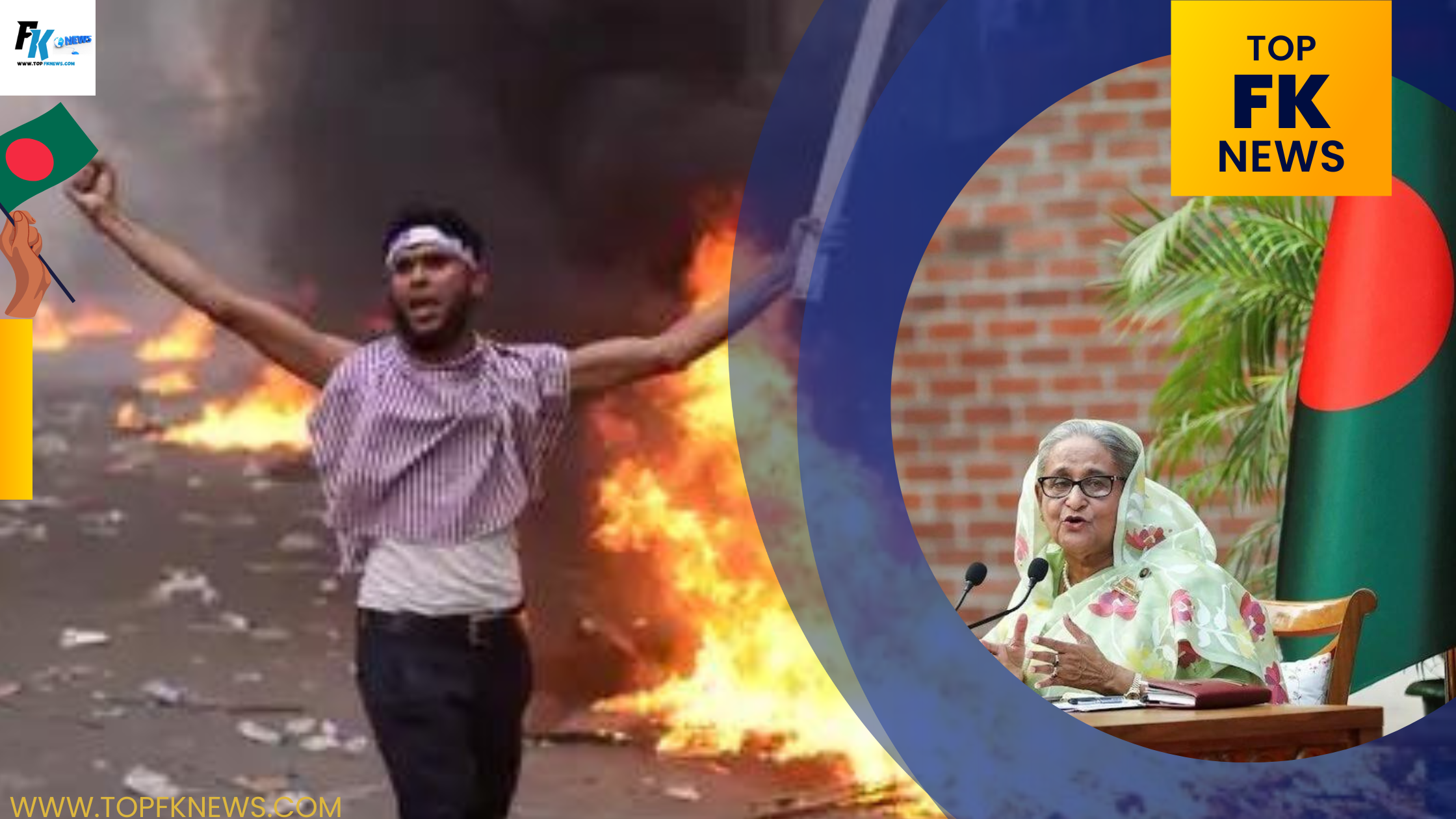Bangladesh’s army is attempting to restore order after Sheikh Hasina, the nation’s “iron lady,” escapes.
The Dramatic Fall of Bangladesh PM Sheikh Hasina
On the afternoon of August 5th, the airwaves in Bangladesh buzzed with a scene straight out of a political thriller. Televisions broadcast a helicopter rising from the residence of Sheikh Hasina, the country’s prime minister until moments before. Inside the chopper were Sheikh Hasina and her sister, whisked away “to safety.” The dramatic escape was a precursor to a cascade of events that plunged the nation into turmoil. Shortly after the helicopter’s ascent, jubilant protesters stormed the prime minister’s residence. They lounged in her bed, made off with pets and furniture, and danced in the streets of Dhaka. In a televised address, General Waker-uz-Zaman, the army chief, confirmed that Sheikh Hasina had resigned and announced plans to form an interim government. One of the world’s longest-serving female heads of government and a cunning autocrat, Sheikh Hasina was abruptly ousted by an enraged populace.
Rising Unrest and Sheikh Hasina's Rule
Sheikh Hasina’s rule over this nation of 171 million had spanned 20 of the past 28 years, characterized by an iron grip on power. Her political longevity hinged on the army’s tacit support and increasing repression. The January election that secured her fifth term was marred by widespread rigging and a boycott by the main opposition party, solidifying the country’s slide into a one-party state. However, the formula that had sustained her rule began to unravel last month when protests erupted, spearheaded by students. The spark was the reinstatement of a quota system reserving at least 30% of government jobs for descendants of freedom fighters from Bangladesh’s 1971 liberation war, a policy perceived to benefit her Awami League (AL) party supporters disproportionately. The government’s harsh crackdown, resulting in the deaths of at least 200 people (with unofficial estimates higher), over 10,000 arrests, and the closure of educational institutions, only fueled the unrest. By August 3rd and 4th, the protests had intensified, with demonstrators demanding the prime minister’s resignation.
The Path Forward and Looming Questions
Three critical questions now loom over Bangladesh. The first concerns the potential for escalating chaos in the streets and the economy. While Dhaka celebrated, the threat of retaliatory violence lingered in a deeply polarized society. Despite strong headline economic growth, underlying issues such as youth unemployment, cronyism, and a balance of payments crisis persisted. The second question is whether a credible democratic system can be rebuilt after a period of caretaker military rule. The young protesters are eager for change. “I joined the protests 14 days ago. Today is the 15th day,” said one protester. “Now I have seen the victory. This Bangladesh is now made by Gen Z. I don’t want any martial law…I want a constitution which ensures human values.” Yet, the political landscape Sheikh Hasina left behind is barren, with institutions undermined and the main opposition party, the Bangladesh National Party (BNP), crippled by imprisoned leaders and internal issues mirroring those of the AL. The final question is the extent to which external powers will influence Bangladesh’s future. Ultimately, however, Bangladesh’s fate lies with its citizens. General Waker has asked for patience during the transition to a new government, but he should not test their patience for too long.

